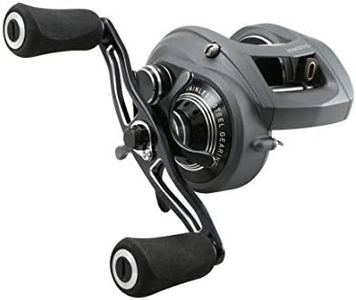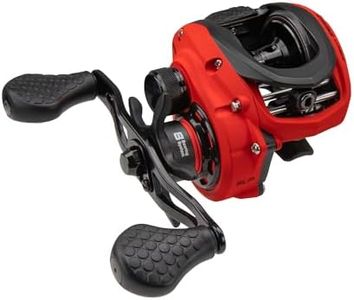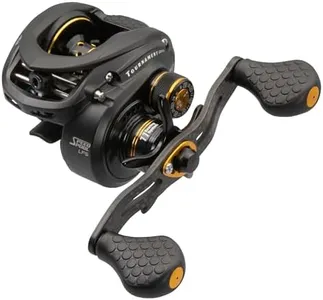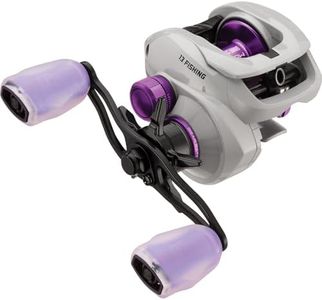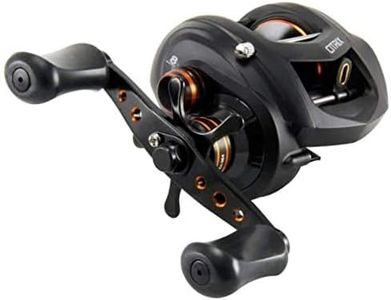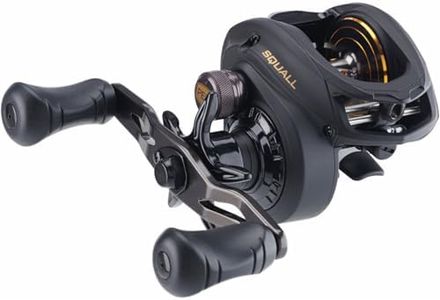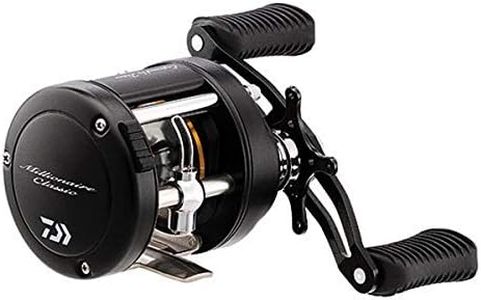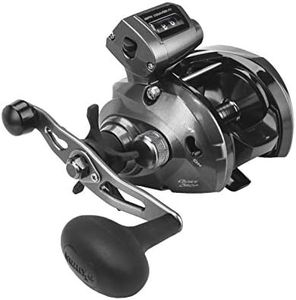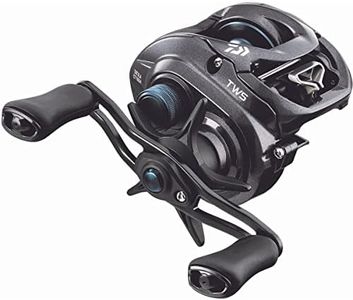We Use CookiesWe use cookies to enhance the security, performance,
functionality and for analytical and promotional activities. By continuing to browse this site you
are agreeing to our privacy policy
10 Best Anti Backlash Baitcast Reel
From leading brands and best sellers available on the web.Buying Guide for the Best Anti Backlash Baitcast Reel
Selecting the right anti-backlash baitcast reel can make your fishing experience much smoother and more enjoyable, especially if you're either new to baitcasting or want fewer headaches on the water. The main idea behind these reels is to minimize or eliminate 'backlash'—that tangled mess of fishing line that can happen when the spool spins faster than the line is leaving it. When shopping for an anti-backlash baitcast reel, it's important to understand the features that directly impact ease of casting, smooth operation, and suitability for your fishing style, target species, and comfort level.Braking SystemThe braking system is a mechanism in the reel designed to control the speed of the spool during a cast, which helps prevent backlash. There are two common types: magnetic and centrifugal brakes. Magnetic brakes are generally easier to adjust, even while casting, making them user-friendly for beginners and situations with changing wind conditions. Centrifugal brakes, on the other hand, provide control based on the spool's speed and often require internal adjustment. Some reels offer a combination of both. If you're just starting, look for reels with simple, external adjustments so you can fine-tune as you learn. Experienced anglers might prefer dual systems for greater control.
Gear RatioThe gear ratio refers to how many times the spool turns for each turn of the handle. Lower ratios (like 5:1) offer more power and are great for slow, controlled retrieves or heavy lures. Mid-range ratios (6:1 to 7:1) are the most versatile and suit a wide range of fishing techniques. High-speed ratios (8:1 and above) are for fast retrieves, which are useful if you need to bring in your line quickly to make lots of casts or work lures at high speed. Consider your primary fishing style: if you’re unsure, a mid-range gear ratio provides good flexibility.
Spool Tension AdjustmentSpool tension adjustment lets you fine-tune how quickly the spool spins when you cast. This setting plays a big role in preventing backlash, especially with different lure weights. Too much tension makes casting harder and limits your distance, while too little lets the spool spin freely but increases backlash risk. Beginners should start with more tension and gradually loosen it as they become comfortable. The right tension lets your lure drop smoothly without the spool continuing to spin after the lure hits the water.
Line CapacityLine capacity is simply how much fishing line the spool can hold, usually measured in yards for a certain pound-test line. More capacity means you can use heavier or longer lines, which is beneficial for larger fish or longer casts. If you fish in smaller waters or for smaller species, less capacity is fine and a lighter reel can feel better in hand. For bigger waters or species, or if you make especially long casts, consider a reel with higher line capacity.
Frame MaterialThe frame material of a reel affects its strength, weight, and durability. Common materials are graphite, aluminum, or a blend of both. Aluminum is stronger and more durable, ideal for heavy use and larger fish, but can be heavier. Graphite is lighter and resists corrosion well, making it good for casual anglers and freshwater use. Think about how often and where you fish—if you need lightweight comfort or maximum strength—and choose accordingly.
Drag SystemThe drag system controls how much resistance a fish feels when it pulls against the line. A smooth, strong drag helps tire out fish without breaking your line. Entry-level reels might offer less drag power, which is fine for small to medium fish. If you regularly target larger, stronger species, look for a reel with a smooth, high-capacity drag. Always check that the drag adjusts easily and holds steady under pressure.
Ball BearingsBall bearings in a reel contribute to its smooth operation. More bearings generally mean smoother casting and retrieving, but quality matters more than quantity. Stainless steel or sealed bearings last longer, especially in harsh or salty environments. If you prioritize smoothness or fish often, look for reels with high-quality, corrosion-resistant bearings. For occasional use, a basic setup should suffice.

